45 how are trans fats listed on food labels
FDA Trans Fat Labeling: What You Need to Know - LabelCalc According to the FDA, trans fats should appear as "Trans fat" or "Trans" on the nutrition facts panel on a separate line located directly underneath "Saturated fat." Values for trans fats must appear in grams per serving. If the value for your product is under 5 grams per serving, then you must round it to the nearest 0.5 gram. Healthy Eating As You Age: Know Your Food Groups Feb 25, 2022 · For example, in the vegetables food group, 1 cup of raw spinach and 1/2 cup of cooked spinach both count as 1 cup-equivalent because they have the same nutritional value. Cup-equivalents and ounce-equivalents help you understand the different amounts of foods from each food group that you should eat. Main food groups Vegetables
How to Understand and Use the Nutrition Facts Label | FDA - U.S. Food … Feb 25, 2022 · Note: most uses of artificial trans fat in the U.S. food supply have been phased out as of 2018. Protein: A %DV is required to be listed if a claim is made for protein, such as "high in protein."

How are trans fats listed on food labels
The FDA Changes Your Food Labels - alsearsmd.com This month the FDA announced that food labels must list trans fats. Trans fats are a by product of food processing. They are in many "low fat" foods such as crackers, breads, and cereals. After years of preaching the benefits of these low fat foods, we now know that trans fats are worse for your heart than the natural fats they replaced. Trans Fat on Food Labels: Now You See It, Now You Don't Explanation Barbara Schneeman, director of the FDAs Office of Nutritional Products, Labeling and Dietary Supplements, says the reason the FDA is allowing foods containing less than 0.5 g of trans fats to be rounded down to 0 is that current detection methods for trans fats are not very reliable for amounts less than 0.5 g. › en › healthy-livingUnderstanding Food Nutrition Labels | American Heart Association Mar 06, 2017 · Not all fats are bad , and total sugars can include both natural and added sugars. Limit the amounts of added sugars , saturated fat and sodium you eat, and avoid trans fat. When choosing among different brands or similar products, compare labels and choose foods with less of these nutrients when possible.. 4 - Get enough of the beneficial ...
How are trans fats listed on food labels. Trans Fatty Acids - Learn How To Identify Trans Fats in Foods You'll also see many packaged foods separately listing the amount of trans fats on their nutritional label if they replaced the oil with a different product. You Can Take These Steps: Eat more foods such as fruits and vegetables, beans, brown rice, nuts, seeds, eggs, fish and lean meats. Be an informed consumer. Read nutritional labels. › eat-smart › fatsTrans Fats | American Heart Association There are two broad types of trans fats found in foods: naturally-occurring and artificial trans fats. ... Look for "0 g trans fat" on the Nutrition Facts label and no hydrogenated oils in the ingredients list. Doughnuts, cookies, crackers, muffins, pies and cakes are examples of foods that may contain trans fat. Limit how frequently you ... Making Sense of Food Labels | ADA - American Diabetes … Total, saturated and trans fat. Fat free: less than 0.5 grams of fat; Saturated fat free: less than 0.5 grams of saturated fat; Trans fat free: less than 0.5 grams of trans fat; Low fat: 3 grams or less of total fat; Low saturated fat: 1 gram or less of saturated fat; Reduced fat or less fat: at least 25% less fat than the regular version; Sodium Fats and trans fats | NSW Food Authority The amount of total fat and the amount of saturated fat must be declared on all food labels. The amount of trans fat in food must be declared on the label if a nutrition claim is made about cholesterol, polyunsaturated, monounsaturated fats: omega 3, omega 6 or omega 9 fatty acids.
Understanding trans fat on food labels - NBC News As with other nutrients on labels, the presence of trans fat less than 0.5 gram per standard serving is listed as zero. There may be a trace amount of trans fat in each serving. But the amount of... › food-types › different-fats-nutritionFacts about fat - NHS The main types of fat found in food are: saturated fats; unsaturated fats; Most fats and oils contain both saturated and unsaturated fats in different proportions. As part of a healthy diet, you should try to cut down on foods and drinks that are high in saturated fats and trans fats and replace some of them with unsaturated fats. Saturated fats Fat Content on Food Labels - Reading Between the Lines The Mayo Foundation continued, "Still, you may be able to tell if a product contains trans fat, even if it's not directly listed on the food label. Look for the words ' hydrogenated ' or 'partially hydrogenated' in the list of ingredients. These terms indicate that the product contains trans fat. How to Understand and Use the Nutrition Facts Label | FDA - U.S. Food ... Nutrients Without a %DV: Trans Fats, Protein, and Total Sugars: Note that Trans fat and Total Sugars do not list a %DV on the Nutrition Facts label. Protein only lists a %DV in specific situations ...
22 Foods High in Trans Fat You Should Avoid | New Health Advisor Trans fats are a type of fat, mostly present in fast food and processed foods of all kinds, that's known for being bad for your health. While there are natural foods that include trans fats, such as red meat and some types of dairy, it's most commonly found in fried foods, baked goods, fast food and a good number of processed foods. Food Labels Deceptive on Trans Fats, Says Researcher To more accurately reflect the amount of trans fat in food, Brandt believes it should be listed in increments of one-tenth of a gram. If, for example, there are .35 grams of trans fat in a food ... Understanding Ingredients on Food Labels - American Heart Association Mar 06, 2017 · Food labels are an important source of information about calories and the nutritional value of the foods you eat, a crucial tool in building a heart-healthy diet. ... You won’t find these listed as trans fats at all, but rather ingredients that contain trans fats: mainly partially hydrogenated oil and hydrogenated oil. Food Labels: Fat & Cholesterol | Home & Garden Information Center As a result, total fat, saturated fat, trans fat and cholesterol are required under the Nutrition Facts panel of food labels. Information on the content of polyunsaturated and monounsaturated fat is optional. The Nutrition Facts label shows you how much fat is in a product, even if the fat is hidden as an ingredient.
› en › healthy-livingUnderstanding Ingredients on Food Labels | American Heart ... Mar 06, 2017 · Perhaps trickiest of all is trans fats. You won’t find these listed as trans fats at all, but rather ingredients that contain trans fats: mainly partially hydrogenated oil and hydrogenated oil. Trans fats can elevate your risk of developing heart disease and stroke. These fats raise your bad cholesterol (LDL) and decrease your good ...
Fast Food Restaurants & Nutrition Facts Compared - A Calorie Counter Fast food is bad food. That's pretty much common knowledge these days. The majority of the foods served at fast food restaurants contain an insane amount of calories, tons of fat (including the very evil trans fat), and are high in pretty much everything else that you'd want your food to be low in. Long story short, it's the kind of food you want to avoid eating.
Regulations Amending the Food and Drug Regulations (Nutrition … Jul 20, 2022 · 4 (1) Item 26 of the table to subsection B.01.009(1) of the Regulations is replaced by the following: Item Ingredient; 26: vegetable or animal fats or oils for which a standard is prescribed in Division 9, and modified, interesterified or fully hydrogenated vegetable or animal fats or oils, if the total quantity of those fats and oils that are contained in a prepackaged …
Food label: ingredient list - Canada.ca Understanding food labels; Food label: ingredient list. The ingredient list shows all the ingredients in a packaged food. Ingredients are listed in order of weight, beginning with the ingredient that weighs the most and ending with the ingredient that weighs the least. ... Sometimes nutrients like saturated and trans fats, sodium, and sugar ...
Cut Down on Saturated Fats - Health trans. fat. Labels may also list monounsaturated fatty acids and polyunsaturated fatty acids. These are types of unsaturated fats. Pay attention to the specific types of fats listed. Choose options that are lower in or have no saturated fats and . trans. fats or have unsaturated fats instead. 3. Make some healthy . shifts.
What Are Trans Fats? Food Sources, Decoding Labels - WebMD Check the Nutrition Facts label and the ingredient list. If the Nutrition Facts label says the product has "0 g trans fat," that doesn't necessarily mean it has no trans fats. It could have up to ...
› createJoin LiveJournal Password requirements: 6 to 30 characters long; ASCII characters only (characters found on a standard US keyboard); must contain at least 4 different symbols;
Guidance on Trans Fatty Acids in Labeling - U.S. Food and Drug ... How should trans fatty acids be listed? Trans fatty acids should be listed as " Trans fat" or " Trans " on a separate line under the listing of saturated fat in the nutrition label. Trans fat...
› nutrition › how-to-read-food-labelsHow to Read Food Labels Without Being Tricked - Healthline Aug 19, 2020 · An agency in the U.K. recommends food labels contain information about how much physical activity it takes to burn off the calories in certain food… READ MORE Top 11 Biggest Lies of the Junk ...
Processed foods: Health risks and what to avoid - Medical News Today May 14, 2020 · For example, according to a 2019 study, a 2% increase in energy intake from trans fats is linked with a 23% increase in cardiovascular risk. The best way to avoid refined oils and trans fats is to ...
Trans Fats Added To Nutrition Labels - medicinenet.com Under the new FDA regulations, by Jan. 1, 2006, consumers will be able to find trans fat listed on food nutrition labels directly under the line for saturated fat. The new information is the first significant change on the Nutrition Facts panel since it was established in 1993. The new labeling reflects scientific evidence showing that ...
Trans Fats: The Truth in Labeling | Atkins After 2006, when the new labeling laws go into effect, the FDA will still allow manufactucturers to list "zero" under trans fats if there is less than ½ gram per serving of the food. They will also permit manufacturers to say "zero trans fats" on the label if a serving size contains a half gram or less. This is a bad rule that needs changing.
Easy Way to Tell if Food Has Trans Fats; Don't Trust Labels Under five grams can be listed in one-half gram increments. Lower than one-half gram can be listed as zero grams of trans fats! These allowances permit the food maker to list the trans fat content as "zero" if the food has a fraction less than one-half gram of this ingredient.
Food With No Trans Fat - TheSuperHealthyFood "Even though the label states "zero trans fats," one serving of the food can contain up to 0.5 grams of trans fat, according to the law, and still be labeled trans-fat-free," explains Elizabeth Ward, MS, RD. The same guideline exists for saturated fats. Only when the food label states "no trans fats" does it really mean there are none.
› food › food-labeling-nutritionChanges to the Nutrition Facts Label | FDA - U.S. Food and ... Mar 07, 2022 · Manufacturers with $10 million or more in annual sales were required to update their labels by January 1, 2020; manufacturers with less than $10 million in annual food sales were required to ...
Reading Food Labels - Trans Fats | Nutrition Basics As of January 1, 2006, trans fat must be listed on food labels along with other bad fats (saturated fats) and good ones (unsaturated fats). The addition is a victory for Harvard School of Public Health researchers who helped sound the alarm about trans fat in the early 1990s and who advocated that it be explicitly listed on food labels.
Finally, Food Labels to List Trans Fat - WebMD Trans fatty acids are the result of a process called hydrogenation that converts a relatively healthy, unsaturated liquid fat, such as vegetable oil, into a solid one, to make the product shelf...
Coconut Oil | The Nutrition Source | Harvard T.H. Chan School of … Partially Hydrogenated: The small amount of unsaturated fats in coconut oil is hydrogenated or partially hydrogenated to extend shelf life and help maintain its solid texture in warm temperatures. This process creates trans fats, which should be avoided. Store coconut oil in a cool dark location in a sealed container or in the refrigerator.
› en › healthy-livingUnderstanding Food Nutrition Labels | American Heart Association Mar 06, 2017 · Not all fats are bad , and total sugars can include both natural and added sugars. Limit the amounts of added sugars , saturated fat and sodium you eat, and avoid trans fat. When choosing among different brands or similar products, compare labels and choose foods with less of these nutrients when possible.. 4 - Get enough of the beneficial ...
Trans Fat on Food Labels: Now You See It, Now You Don't Explanation Barbara Schneeman, director of the FDAs Office of Nutritional Products, Labeling and Dietary Supplements, says the reason the FDA is allowing foods containing less than 0.5 g of trans fats to be rounded down to 0 is that current detection methods for trans fats are not very reliable for amounts less than 0.5 g.
The FDA Changes Your Food Labels - alsearsmd.com This month the FDA announced that food labels must list trans fats. Trans fats are a by product of food processing. They are in many "low fat" foods such as crackers, breads, and cereals. After years of preaching the benefits of these low fat foods, we now know that trans fats are worse for your heart than the natural fats they replaced.
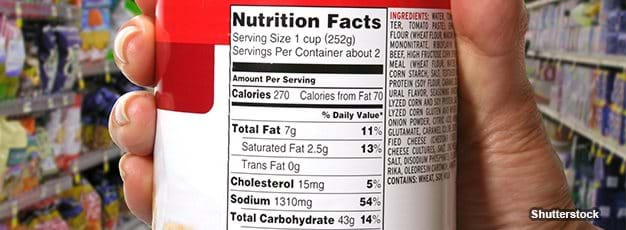

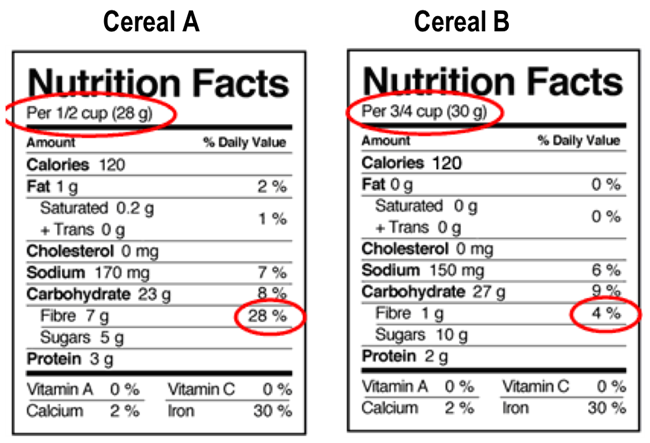
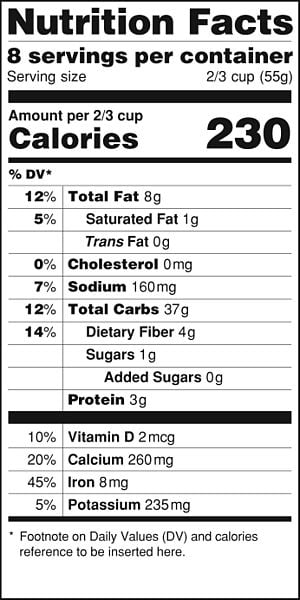
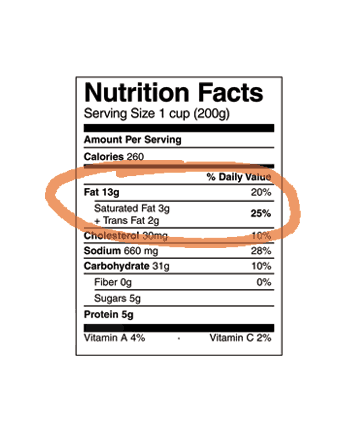
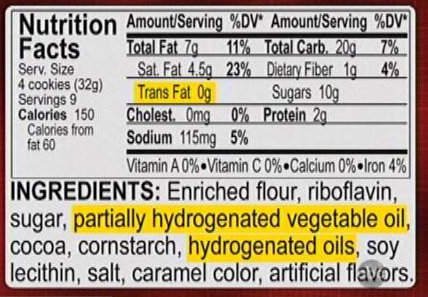




:max_bytes(150000):strip_icc()/Untitled-design-2--57535bc15f9b5892e8c65c9c.jpg)

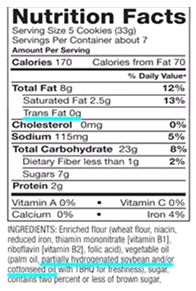
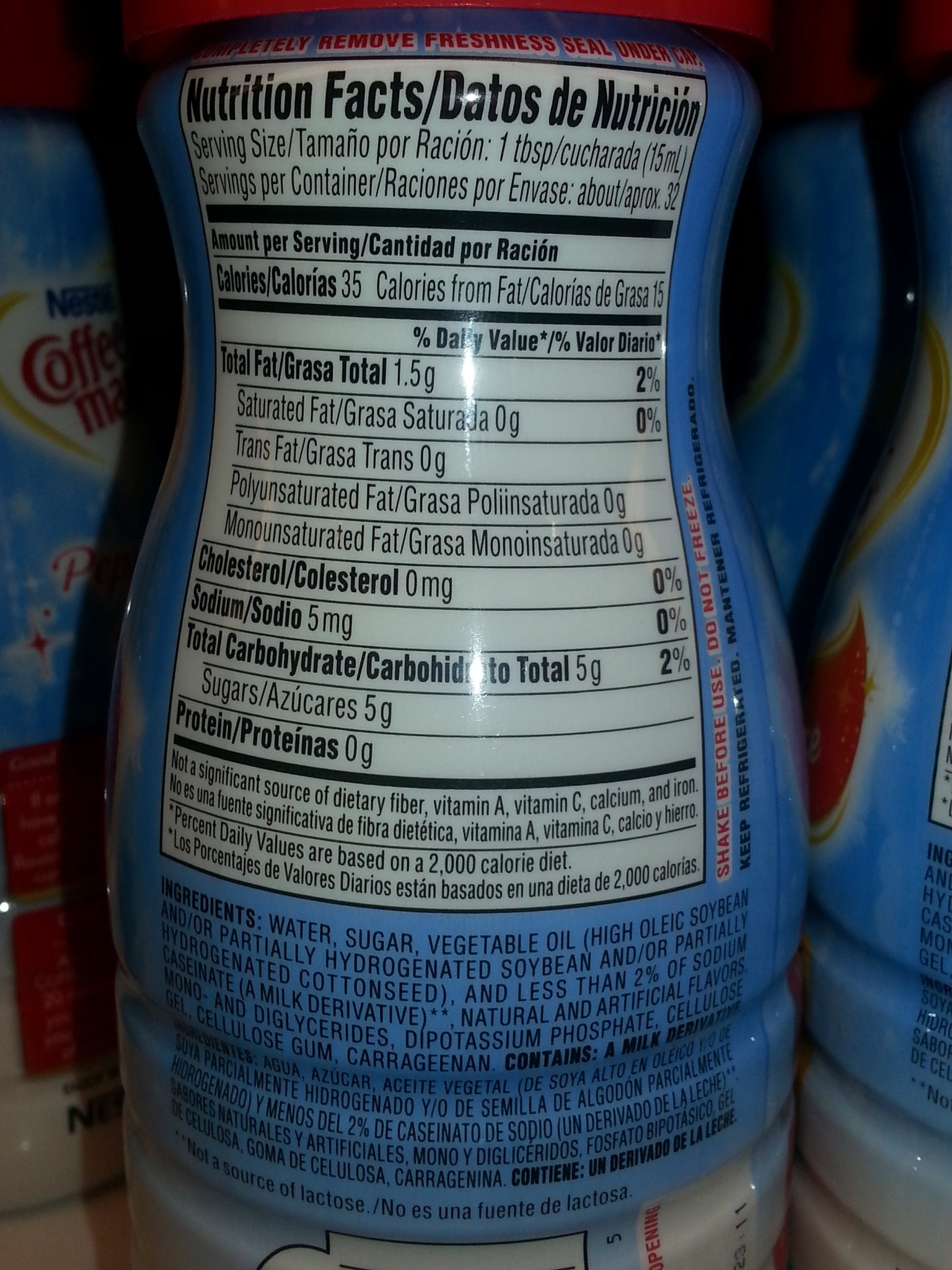



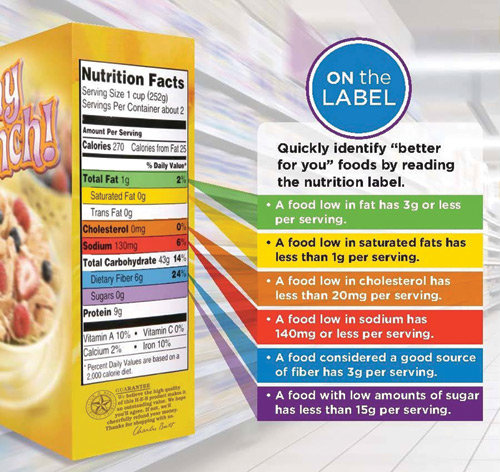



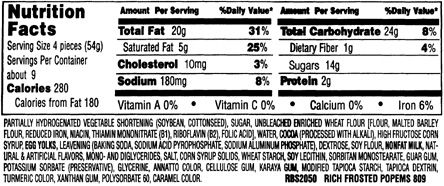
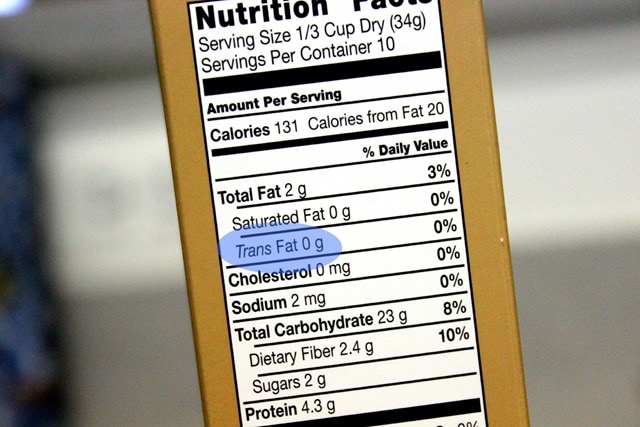


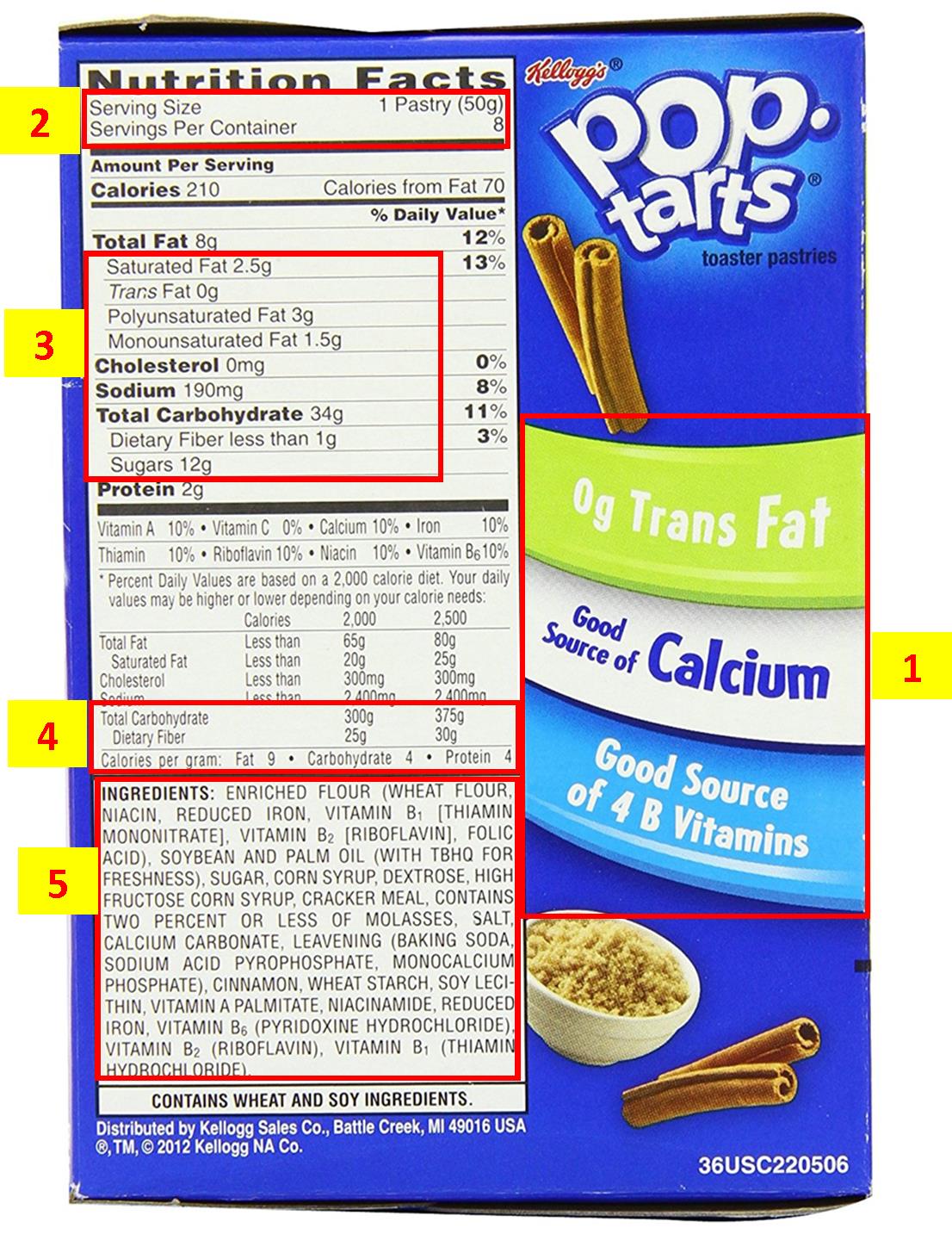
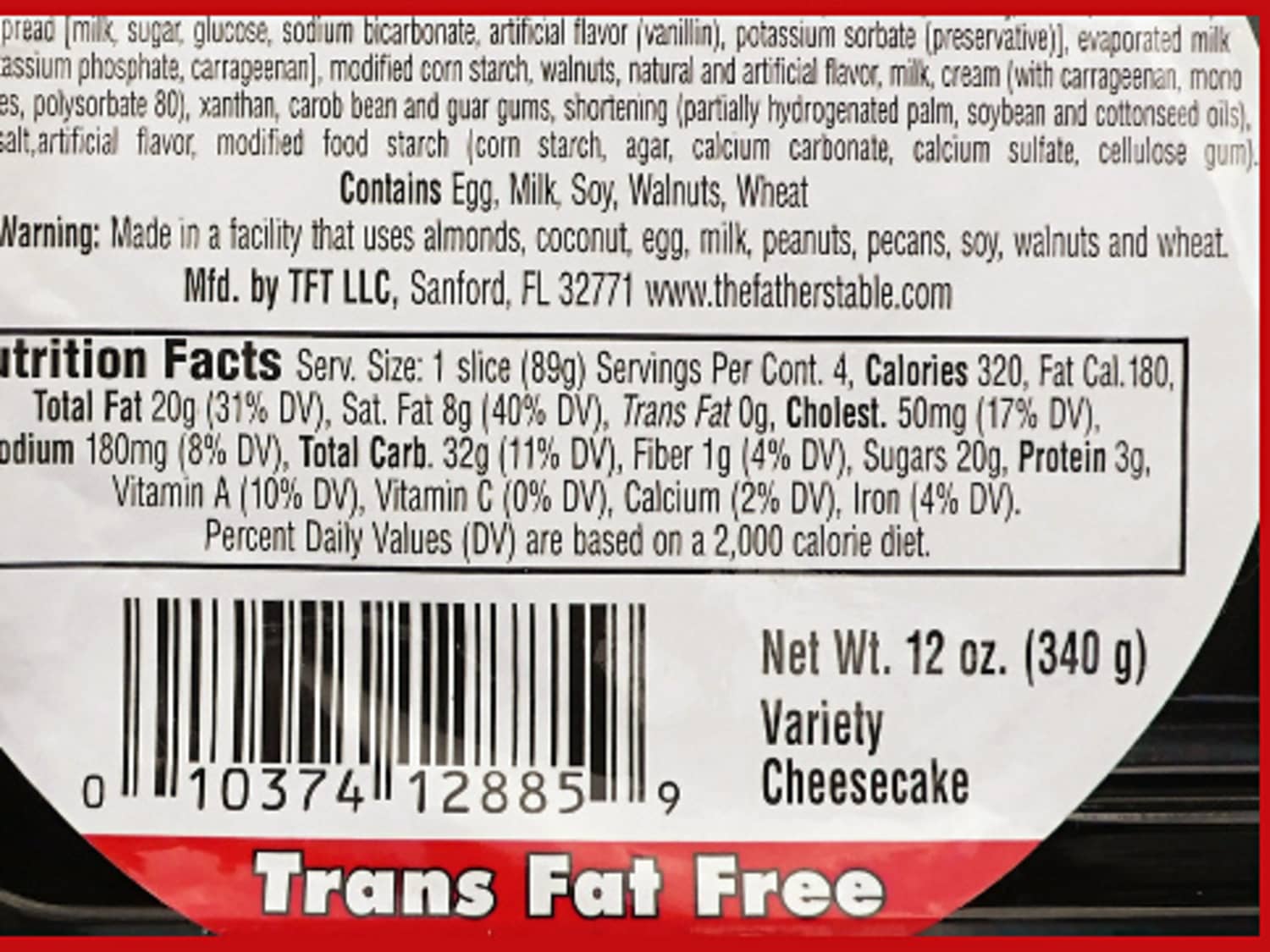
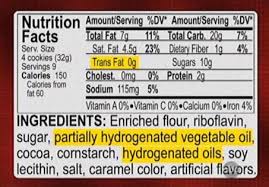


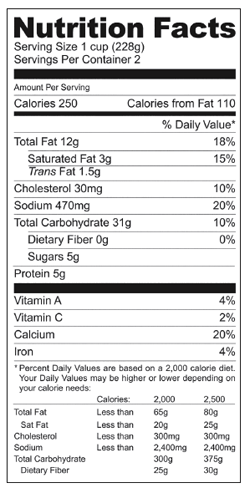







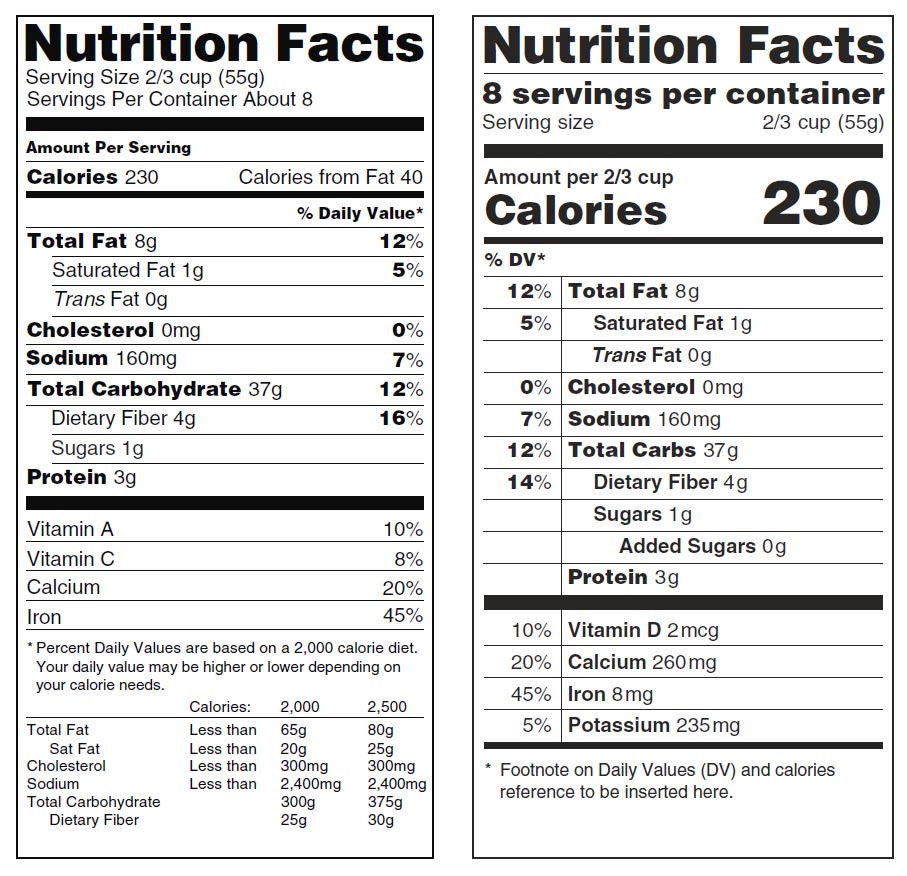


Post a Comment for "45 how are trans fats listed on food labels"